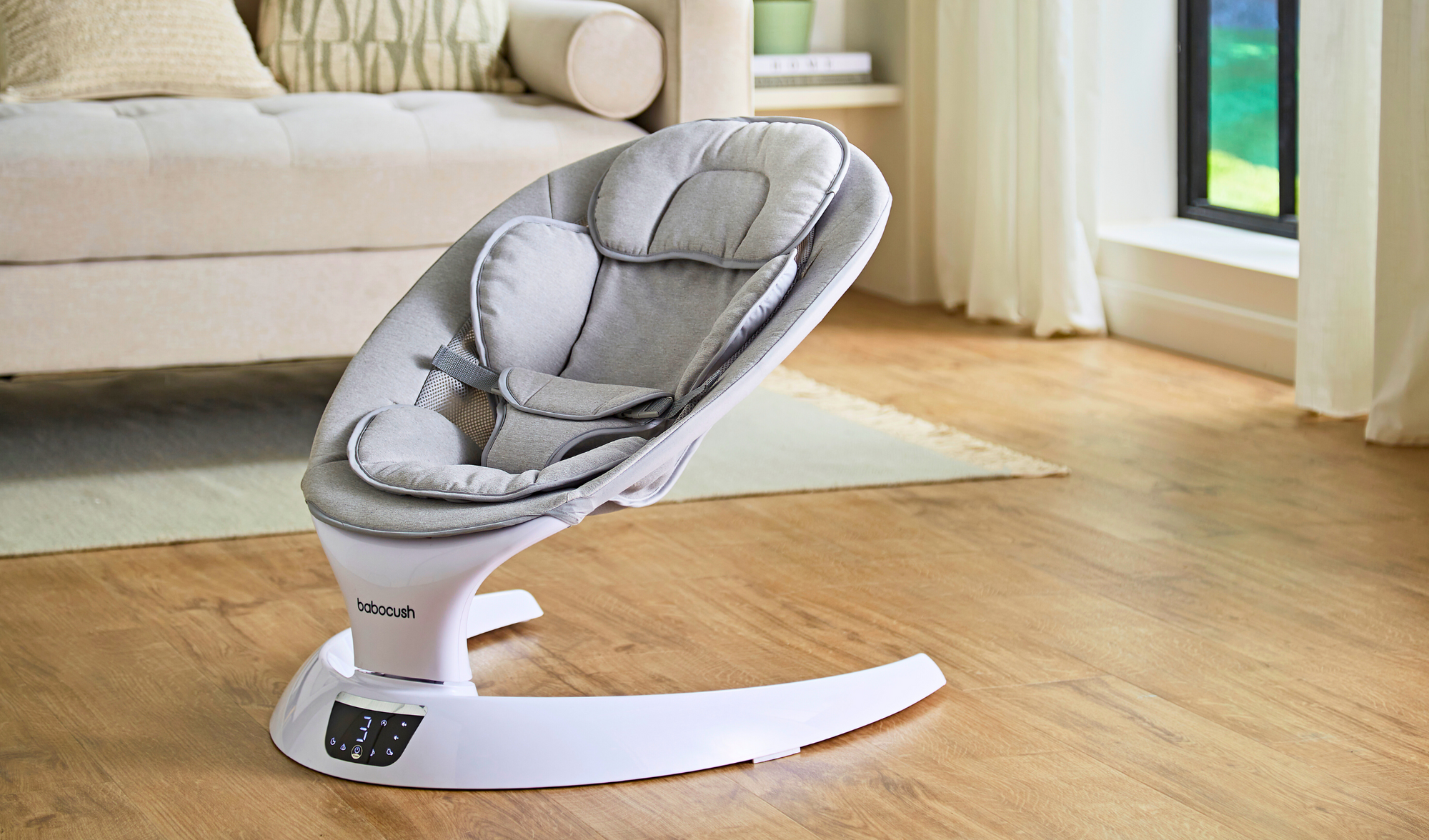Gas problems are typical in babies whose digestive systems are still developing. If your new born is having difficulties sleeping due to gas pains, you may be wondering if there are any unique sleeping positions that can help calm or prevent a disturbed stomach.
So, what's the best way to put a gassy baby to sleep? All babies (including gassy ones) should be placed to sleep on their backs until they reach one year old, according to the American Academy of Pediatrics (AAP), as this is the safest sleeping position. That said, there are steps you can take to get ahead of your little one’s gas troubles, so they’ll sleep soundly through the night. Find out more below.
What does it mean if my baby is gassy?
Simply put, a gassy baby is a typical baby.
The digestive systems of new borns and babies under the age of six months are still developing. This means that food may not always be fully broken down, resulting in gas and/or trapped air in the stomach and/or intestines. Babies' tummies are so little that excess air can readily fill them up, causing pain and pressure.
What's the good news? Usually, the soreness is just temporary. It dissipates, just like gas.
Signs You Have a Gassy Baby
So, how can you determine if your baby’s discomfort is because of gas? If your new born burps or passes wind a lot, you'll know they are having gas problems. Your little one may be experiencing gas-related discomfort if they:
- Become red in the face while crying
- Wriggle and pull their legs up to their chest
- Act increasingly fussy after feeding
- Have trouble eating or sleeping
Causes Of Gas In Babies
The majority of a baby's gas discomfort will be caused by their still-developing stomach and intestines. However, if their gas problems seem to be getting worse, there could be a number of other factors at play, including:
Swallowing while sipping - Your baby is most likely a fan of the breast or bottle. What's the drawback? With those enormous gulps, your little one might be taking in some additional air, and extra air creates extra gas.
If you're breastfeeding, look for evidence that your baby is properly latching on to your breast and forming a seal around your nipple (you shouldn't see your areolas or the baby’s tongue).
If you can’t pinpoint any other causes for your baby’s discomfort, it might be worthwhile to look at your diet and consider limiting potentially aggravating foods and drinks, such as:
- Coffee
- Caffeinated sodas
- Dairy
- Chocolate
- Alcohol
“Back is best” sleep position – Parenthood is magical, yes. But it can also be a little bit maddening, especially when the thing that you’re told you must do is also the very thing that’s causing your baby discomfort. This is so often the case with back sleeping. Though the AAP states black-sleeping is essential for your baby’s safety, this sleep position may also lead to trapped intestinal gas for some babies.
While your baby’s gas may feel stressful, it may help to remember it won’t last forever. At around six to nine months of age, your baby’s digestive system will mature. Until then, there are steps you can take to treat their tummy and set them up for nights of back-sleeping bliss.
How to Prevent & Treat A Gassy Baby
What relieves gas in newborns? There are several efficient techniques and natural treatments you may use to aid your newborn baby with gas issues. The secret is to remove the gas bubbles that have built up in the digestive tract and abdomen. The following cures might be useful.
1. Burp During and After Feedings

Because gas bubbles tend to form from air that sneaks in during feeding, burping is your friend. It expeles air, which can form gas bubbles in the stomach. Although it is customary to burp your baby after feeding them, if they have gas, you can also attempt burping during feeding. This can provide some gas relief for your baby, especially at night while feeding before bed.
Top Tip: Your baby may not appreciate interrupting a delicious meal to burp, so if you're going to try and burp them during a feed, be consistent and establish a routine.
2. Encourage Slow Eating
When your baby feeds too quickly, he or she swallows more air and produces more gas bubbles. Use a bottle with a slow-flow nipple to encourage slower eating. If you're breastfeeding and have an excess of breast milk, visit your doctor or a lactation consultant.
3. Use the Right Bottle

Slow-flow nipples are revolutionary, but so are infant bottles that are vented, tilted, or collapsible. These types were created by professionals to restrict the amount of air your baby swallows while eating. Top Tip: Perhaps your baby feeds too quickly and swallows air, resulting in gas bubbles. In that scenario, try using an angled bottle with a slow-flow nipple, or experiment with different breastfeeding positions.
4. Identify Food Sensitivities
If your baby appears to be in pain after being breastfed, they may be allergic to the things you're eating. You can try to identify these foods and eliminate them from your diet for at least one week to see whether it improves your gassy baby's condition. Caffeine-containing meals, as well as dairy products, onions, cabbage, and spicy foods, are examples of popular foods that may induce flatulence in breastfeeding babies.
5. Change Formula

Individual factors influence the best formula for gassy newborns. To begin, most specialists will recommend formulas based on cow's milk. However, as previously said, your child may have a milk allergy or lactose intolerance. In that situation, a soy-based iron-fortified formula or a hypoallergenic formula would be a preferable option.
If you're thinking about switching formulas, talk to your child's doctor first. A gassy baby may not require a change in formula, but the provider will be able to treat the issue and assist you in successfully switching if necessary.
Top Tip: Before changing formulas or changing your baby's food, always consult with his or her doctor. Sometimes the problem isn't the formula itself, and additional treatment may be necessary.
6. Position Your Baby for Gas Relief
A few positions that support the stomach and digestive system can aid your gassy baby.
The left side. While holding your baby in your arms, gently roll them onto their left side. You could stroke their back to help them relax.
On their back. Place your baby on their back and move their legs like they're cycling. The greatest sleeping posture for a gassy baby is also on the back (and the best and safest sleeping position for all infants until their first birthday).
On the tummy. Tummy time has numerous advantages, one of which is that it may promote digestion. A little abdominal pressure may assist keep things going and break up those gas bubbles. Watch the video below for some tummy time suggestions, and remember to always observe your baby during tummy time.
7. Try the babocush comfort cushion

The babocush has helped relieve colicky babies thanks to the unique laying position, the internal heartbeat simulator and gentle secure hold. The simulator, in particular, is great because its gentle vibration is reminiscent of the womb.
Treating Gas Pain
Try these tummy-soothing remedies to stop gas discomfort in its tracks (and avoid restless nights):
- Tummy Time – You can engage your little one in supervised "tummy time" by placing them on the floor on their stomach thirty minutes after eating (to avoid spitting up). The floor's pressure on their belly will aid in the release of any trapped gas.
- Bicycles — Your child may be too young for training wheels, but "baby bicycles" may be just the thing to get your baby on the path to a healthy tummy. Lie your baby down on their back and cycle their legs toward their stomach.
- Massage – Who doesn't enjoy a day at the spa? To ease gas discomfort, give your baby a gentle massage. Gently stroking the tummy in a clockwise direction, in particular, will aid in the expulsion of gas. It may also assist in lulling your baby into sleepy time mode.
Gassy Babies and Sleep
While the best sleep position for a gassy baby is still on their back, sometimes, gas pains make it harder for your little one to sleep. If this is the case, you may find that swaddling your baby before bedtime will keep them warm and comfortable during the night, as well as reduce any discomfort.
If your baby has fallen asleep while nursing, you're likely to face the following dilemma: You want to burp your baby before putting them down to avoid any gas bubbles, but you don't want to rouse them from their sleep.
If this is the case, use the following strategies to help release any trapped air before laying your baby down on their back:
- Prop baby up – Hold your baby semi-upright against your chest, so that their head can rest on your shoulder. Your body should provide enough pressure on their tummy to encourage a burp.
- Rock baby back and forth – Place their belly down over your arm so that their legs dangle on either side and their head is supported in the crook of your elbow. Then, gently move your arm from side to side while you pat their back.
- Lay baby down – Lay your baby belly down over your lap so that their stomach is on your knees. Then, rock them by moving your legs side to side and gently rubbing their back.
Gassy Baby or Colic?
The primary means of communication for your baby is crying, and because gas can produce weeping or fussiness, it is commonly mistaken as colic. Colic, on the other hand, is a bit unusual. Colic happens when healthy babies cry repeatedly, passionately, and for long periods of time, often at the same time every day. If the culprit is gas, you will be able to find relief; neonates with colic typically wail for no apparent reason and cannot always be soothed.
However, there is significant overlap between a colicky baby and a gassy newborn. An immature digestive system, an imbalance of microorganisms in the stomach (microbiome), dietary allergies or sensitivities, overfeeding, and improper burping can all exacerbate these illnesses.
There are many unknowns about colic, although babies usually grow out of it or the symptoms fade at around 4 months. Still, each baby is unique, and your child's healthcare professional may be able to help you better understand the problem and provide advice on how to treat your baby with gas or colic.


